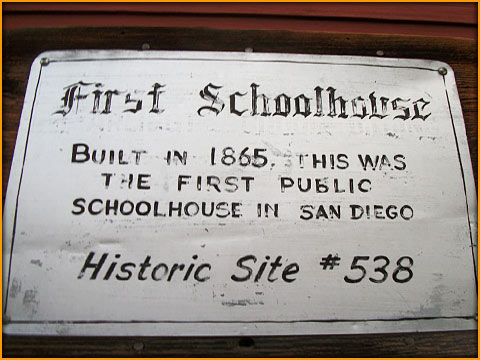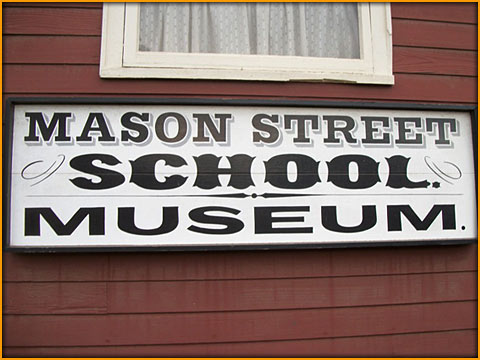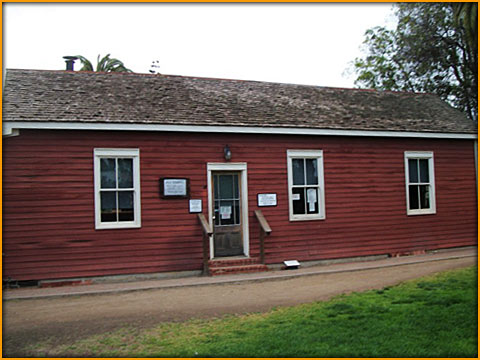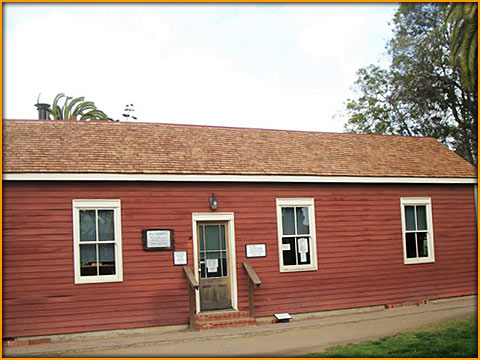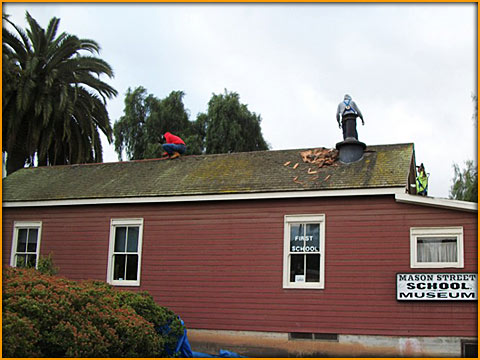Mason Street School
San Diego County Historical Days Association
3966 Mason Street
San Diego, CA 92110
(619) 297-1183
Built in 1865, this was the first public school house in San Diego. Mary Chase Walker was its first teacher. She received a salary of $65/month. After eleven months she quit teaching and married Ephraim Morse, who was president of the school board at the time. Sit at the desks. Books and California on display; adult education classes in California history; fourth grade tours.
Hours: 10-4 Daily; Admission: free
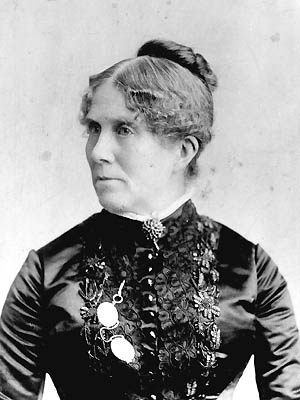
Mary Chase Walker (1828-1899)
Mary Chase Walker was born in Methuen, Massachusetts, in 1828. She began teaching at the age of 15 years in a district school in Groton, New Hampshire. Her salary was $4.00 and “boarded around.” Miss Walker later attended the State Normal School in Framingham, Massachusetts. Graduating in 1861, she resumed teaching at a salary of $400 a year, but due to a tight budget this was cut to $200. Miss Walker determined to try her luck in California. On April 1st, 1865, she took a steamer from New York to San Francisco, paying $375 for the passage that required four weeks. She found no teaching jobs available in San Francisco but was informed that they needed a teacher in San Diego and decided to accept.
In 1865, Old Town had just built the Mason Street schoolhouse. No two boards were the same width or length so it is assumed they tore down abandoned structures and salvaged the lumber to build the schoolhouse. Mary Chase Walker was its first teacher. She received a salary of $65 a month here. Following are excerpts from a paper she wrote in 1898 entitled Recollections of Early Times in San Diego.
I arrived in the bay of San Diego on the morning of July 5, 1865. It was a most desolate looking landscape. The hills were brown and barren; not a tree or green thing was to be seen. Of all the dilapidated, miserable looking places I had ever seen, this was the worst. The buildings were nearly all of adobe, one story in height, with no chimneys. Some of the roofs were covered with tile and some with earth. The first night of my stay at the hotel, a donkey came under my window and saluted me with an unearthly bray. The fleas were plentiful and hungry. Mosquitoes were also in attendance. An Indian man did the cooking and an Irish boy waited on me at the table, and also gave me the news of the town. The landlord told me I could go into the kitchen and cook whatever I wanted if I didn’t like the Indian’s style and I availed myself of this privilege. I rented two rooms in the Robinson House for $2.00 a month. My school was composed mostly of Spanish and half-breed children, with a few English and several Americans. I aimed to teach which was most meaningful to them; namely reading, spelling, arithmetic, and how to write letters. At recess the Spanish girls smoked cigaritas and the boys amused themselves by lassoing pigs, hens, etc. The Spanish children were very irregular in their attendance at school on account of so many fiestas and amusements of various kinds. For a week before a bull fight the boys were more or less absent, watching preparations, such as fencing up the streets leading to the plaza.
Miss Walker noted that tardiness was the rule rather than the exception, as very few families owned clocks. The school had an average attendance of 35 students, ranging in ages from 4 to 17 years, and all 8 grades were taught in just one room. Heat was supplied by an iron stove and the only indoor plumbing was an water bucket with a dipper. School was in session 12 months of the year and school hours were from 9 a.m. to 4 p.m. Outdoor toilets were provided; a crescent, or new moon, cut into the door signified “girls” and a round hole, or sun, indicated “boys.”
Miss Walker taught for 11 months in the Mason Street School. She became the center of controversy when she invited a black woman to lunch at the Franklin House and some diners stormed out, while others stared with contempt. School enrollment plunged from 36 to 15 students. While supported by Robert D. Israel and Ephraim W. Morse, Walker resigned and later that year married Morse, who was president of the school board.
After her teaching career, she supported the suffragette movement and worked to help the needy. Mary died in San Diego on May 17, 1899.
